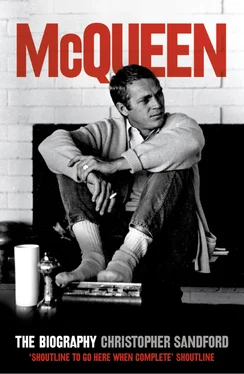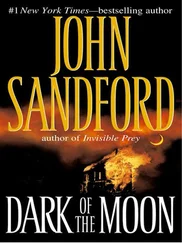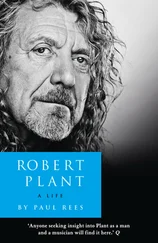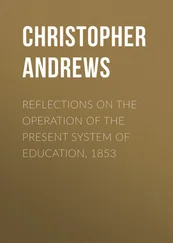He made his life within the cycles of manic depression, and they shaped him as much as the cycles of seasons and weather and fat and famine shaped the lives of other Slaterites. For the most part, Steve was happy enough to lose himself in Claude’s farm and the hardware. But clearly there was a part of him, burning down inside, that wanted to get away as far and as fast as possible.
McQueen’s morbid ambition was in large part revenge. Right down the middle of his psyche ran a mercenary core: the will to get even. Someone, he thought, was always trying to screw him; somebody else was having him on. All the world – but never he – was a con. Not exactly a prize sucker for the sell, Steve started off life ‘thinking everyone , from [Julian] down, was after me’, and went on from there to get paranoid. The bitchy litany became the sustained bark punctuated by the snarl and – when backed into a corner – outbreaks of hysterical frothing at the mouth. Even when McQueen got what he wanted, he combined the swagger of the aggressor with the cringe of the abused.
As Steve’s suspiciousness increased, so did his solitude. At a 1900-era diner stranded on Slater’s Front Street, the ex-owner remembers McQueen ‘real well…he came in after school and spent an hour sitting alone there over a glass of water. He wasn’t like other kids.’ Robert Relyea, with whom Steve went into business in the 1960s, recalls him ‘practising the famous baseball drill in The Great Escape for two days…I don’t think he’d ever been much for team sports.’ This key truth, more broadly unsociable than narrowly un-American, was echoed a few years later, when Relyea and his family were playing football with McQueen in a California park. ‘It was touching that he was running around, laughing at a fumble, punching triumphantly with his fist in the air when he made a touchdown, smiling and nodding when one of the kids brought off a catch, having the time of his life…touching, but also sad that he’d never once played the game as a boy.’ Little wonder McQueen hit the heights in offbeat roles in breakout films. In the process, the improbable wisdom of his moodiness would be fully vindicated.
His life was transformed – at least intensified – by the accumulated blows of 1930–44, to the point where the whole ordeal seemed to be a jail sentence. Not only was McQueen an orphan and condemned case, the Midwest itself was a haven of kidnapping and racketeering, stony-jawed icons like Bonnie and Clyde, Machine-Gun Kelly and the Barkers all plying their trade along the Route 44 corridor. The young Steve once saw John Dillinger being led into jail in Crown Point, Indiana. In later years he remembered how the killer had turned to him with his grinning, lopsided face, curling away from his two guards, and winked. Quite often, McQueen said, he couldn’t go to sleep for replaying the scene in his mind.
Against this felonious backdrop, marches and violent pickets in Saline county reflected the feelings of most Americans in the face of the appalling and mysterious Depression. Fist fights, or worse, regularly broke out between labour organisers and the law. ‘Most of my early memories’, McQueen once told a reporter, ‘are bloody.’
One morning in 1937 Steve was walking with Claude up Central Avenue in Slater when he saw several protesters holding banners turning the corner ahead of them. Soon there was shouting from around the bend. Armed police began to run towards the intersection. Steve looked up at Claude, who said quietly, ‘Something’s up.’ They walked on to the general store on Lincoln Street and heard shots fired. When they got nearer the crowd, they saw one of Claude’s own farmhands being dragged along the ground by three policemen. He was kicking. There was blood, Steve noticed, all over his face and shirt. ‘We better not have anything to do with it,’ Claude calmly told his great-nephew. ‘Better stay way out of it.’ The seven-year-old shook his head.
Steve’s clash with formal education, later that same year, came as a mutual shock. Every morning he walked or biked the three miles down to Orearville, a small, segregated elementary school on Front Street. Stone steps led up under a canopy to the modest one-room box he later called the ‘salt mine’. It was certainly Siberian. A coal stove in the vestibule there gave off as much heat as a 60-watt bulb and when it rained, which it did constantly most winters, water seeped through the roof. Like many shy boys, Steve relied on memorising to get by. (The rote student of Mark Twain would become an actor who hated to learn lines.) Parroting Huck Finn, for his peers, was enlivened by the ‘deez, demz and doz’ tones, plus stammer, in which he flayed the text. It was later discovered that he was suffering from a form of dyslexia. The muffled sniggers were yet another small snub, avenged by Steve with a quick, impersonal beating in the dirt bluff behind the schoolyard or, more often, playing truant. A Slater man named Sam Jones knew McQueen in 1937-8. ‘We all heard stories about him, but the truth is he didn’t show up much.’
By his ninth birthday he was firmly in the problem-child tradition, a pale, sandy-haired boy whose steely-blue eyes gave Jones the uncomfortable feeling of ‘being x-rayed’. People called it a striking face, broad-nosed but narrow-chinned, so that the head as a whole was bullet-shaped rather than oval. Another Slaterite recalls ‘that tense, hunted look he always had in a crowd’. Aside from the claustrophobia, McQueen owed his trademark quizzical squint to hearing loss. An undiagnosed mastoid infection in 1937 damaged his left ear for life, bringing him further untold grief in class and completing a caricature performance as small-town misfit. His remaining time there would be brief, violent and instructive.
As soon as he could drive Claude’s truck or fire a rifle, Steve immediately entered into such active conflict with Slater that the local sheriff called at Thomson Lane to issue a caution, and he aroused the school’s indignation by appearing, when he did so at all, reeking of pig dung. But he also deftly took to his relatives’ world. He liked to hunt, for instance, and once, to Claude’s eternal admiration, he took out two birds with a single shot. Steve often stalked deer or quail in the woods north of town, on the banks of the Missouri, at least once with a pureblood setter named Jim, the officially designated ‘coon dog of the century’. (The animal could apparently understand elaborate human commands, and also predicted the winners of horse races and prize fights.) In short, he said, it was a ‘schizo existence’, in which the wilderness, bloodletting and the magic of the primal, male life jarred against the drudgery of school and church. Steve’s great-uncle and grandparents didn’t bring him up to be violent – something beyond even their nightmares – but they showed him the world, and that was enough.
All this changed for the worse in 1939.
A flash of inspiration as can only be produced by a newlywed parent now caused Julian to send for her son from Indiana. Early that autumn, the same month that Britain went to war with Germany, Steve was taken out of school, packed a kit bag and sat, shrouded in his moth-eaten city clothes, cap pancaked down on his head, in the very back seat of the bus east. It was crowded with immigrant farmworkers going home to enlist. Many of them knew as much about the rest of America as they did about the Antarctic and sat staring or muttering over the noise of Steve’s neighbour, a Negro with a mouth-harp, as they crossed the Mississippi at St Louis. The Greyhound wound through Illinois until, late at night, it came around a curve into town. On both sides a sudden, windswept ruin opened out, the bus ploughing down dark alleys and backstreets, hardly better than furrows between the slums with, Steve noticed, ‘only a couple of pissing rats’ as proof of life. Indianapolis.
Читать дальше












